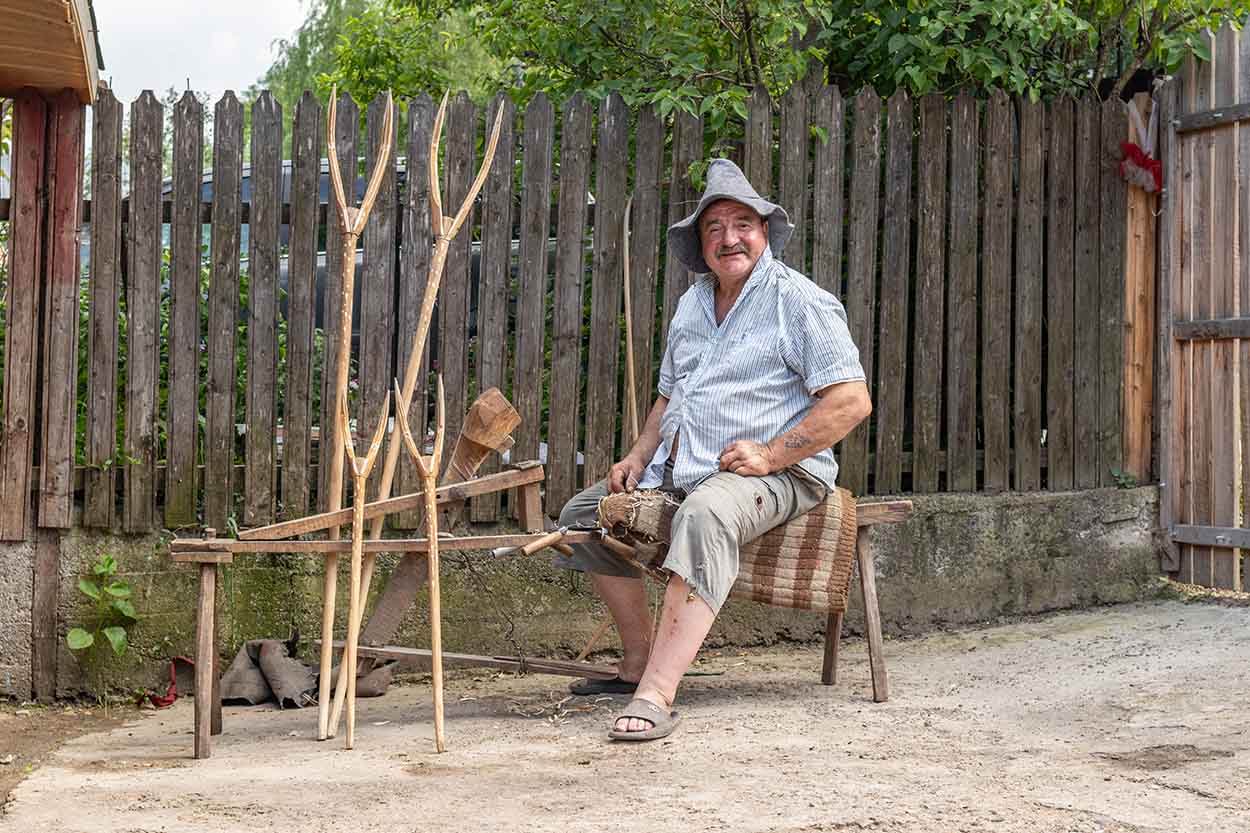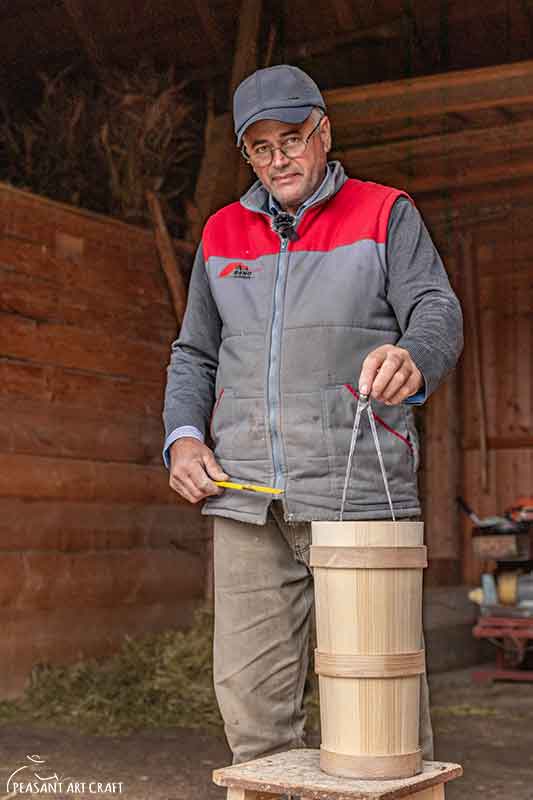
All over the country, people flock to the mountains during weekends and holidays to breathe in the crisp and clean mountain air and climb the highest point of Romania. The route starts from the Nucșoara village, located in the center-south of Romania, on the outskirts of the South Carpathian Mountains. This area was blessed with slopes covered by large orchards and vineyards, large natural pastures, and lots of hayland. With livestock farming as one of the main occupations, it isn’t uncommon to see people collecting fresh hay off their pasture, but one thing that grabbed my attention was some wooden hay forks with two sharp prongs that they used.

They seemed to have been made by hand, so I had to dig deeper into it. It seemed that there weren’t too many artisans into the trade. In fact, there was just one. Just to give you an idea of how rare these artisans are, there was a single one in Maramureș, who passed away last year, at the age of 96. He hasn’t been able to work in his latest years.

Now finding a hay fork maker in Argeș was something I didn’t expect, so I had to seize the opportunity and find out who he was, and where he came from.
Attractions in Argeș https://www.corbiidepiatra.ro/?idmenu=-1&lang=en
Mr. Bloj was back from his full-time job as a watchman in Bucharest, which he said, would provide a retirement income to him. He changed his clothes and took on his apron and a curious hat, which looked like a witch’s hat.
He explained that the hat was a dear souvenir that he wore while filming the role of a blacksmith in a medieval movie because Mr. Bloj Gheorghe is also a blacksmith. He can create high-end objects, from dowry boxes and furniture to axes, hammers, and other tools artisans use.
He put on his apron and went inside the farriery where he kept his tools and shaving horse. With a little help from his grandson, he managed to split an ash trunk along the grain into long sections.
He went about making the forks with no emotion whatsoever. You could tell he was used to being filmed or photographed and he liked to show what he could do, even though he didn’t get enough rest the night before.
„Dear people,” he said, „I’ll show you how to make an original wooden hay fork.” We were thrilled to find such an open and spiritual man.


„An ash trunk is riven with axe and mallet. Look!,” he continued. Working in the farriery had endowed him with superhuman strength. He made it look like a childsplay. The smell of green wood created an immersive sensory experience that reminded me of the inviting smell of the forest. I love wood essences, even in perfumes that capture the essence of nature’s majestic forests, so being in a wood workshop always gives me a sense of well-being, which was exactly how I felt that day.
„The bark is removed. With an axe, we try and make it straight. Prongs will be split out of the bigger end. Tines are equally shaved, and the handle is shaped with a drawknife,” he said, showing every step of the process, and using some old tools.
„These are ancient tools. They belonged to our forefathers, who are long gone,” he explained.
Outside, the grandson had set a water-filled cauldron on fire.


„The water must boil. To soften the wood, we soak it in boiling water. If it hadn’t been boiled, it would’ve already cracked when we tried to spread apart the tines.”
Back inside the workshop, tines are sharp and narrow with a drawknife and shaving horse.


The wooden hay forks were then placed in a form to dry and bend. Then they all set about smoking the newly made tools. This caused quite a commotion. The cauldron was removed from the fire, and in its place was brought a BBQ grill. They placed the forks on the grill and made a slow, smoldering fire under the grill, that kept them busy adding the wood shavings to the fire. The smell was so pungent, the smoke so thick it choked you in an instant.

After about an hour, the green softwood tools were now some stiff, heavy-duty wooden tools meant for hard use. Who would’ve thought that an agricultural tool that looked so simple might require so many processing stages? I didn’t, but it certainly is something very curious to see and preserve nowadays.


As for Mr. Bloj, aside from being very skilled, he was friendly too. He even gave our children a pair of wooden hay forks made especially for them. What a talented craftsperson, we’ll surely be back!
Contact Bloj Gheorghe at 004 0755 548 265
Similar articles
Woodworking at Its Best: Chainsaw Carving an Eagle – VIDEO









Leave a Comment